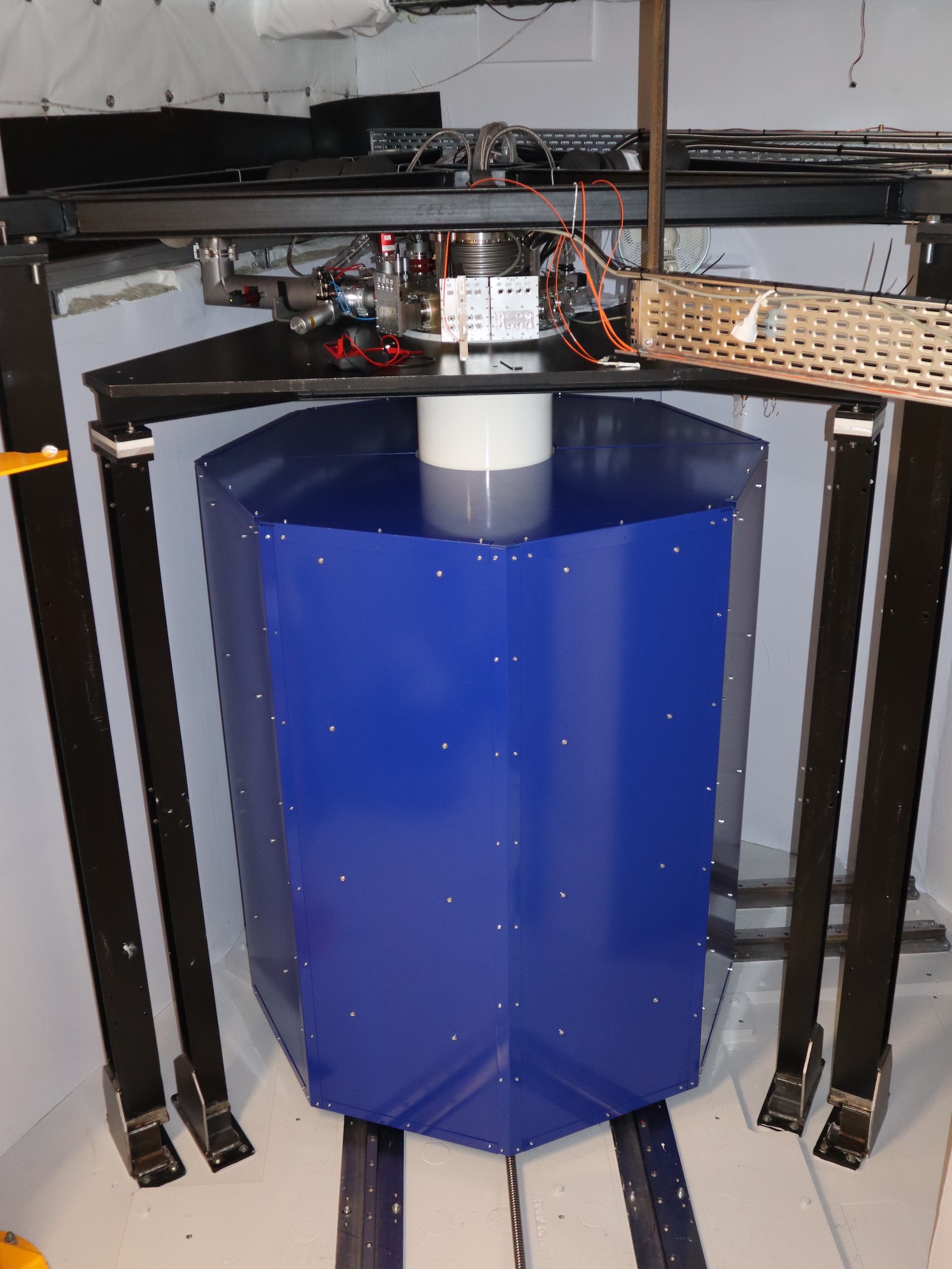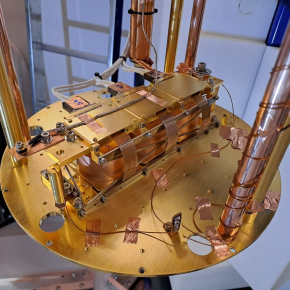Ricochet cryostat takes up residence at ILL
After one year of characterization and instrumentation, the cryostat for the Ricochet physics research experiment took up residence in early December 2023 at the Institut Laue-Langevin (ILL) in Grenoble. It is installed 8.8 metres from the core of the 58.3 MWth nuclear research reactor, in a room specially prepared for the experiment and fitted with 20 tonnes of shielding. Two months after installation, the first heat and ionization signals were observed using 42 g germanium bolometers. This first step opens the door to the precise study of environmental background and detector performance.
Until recently, the study of neutrino interactions with matter was severely constrained by the need for very massive detectors (of the order of a ton or more). It was particularly difficult to extend these precise studies to low-energy neutrino collisions (below 10 MeV) with nuclei, a regime that is nevertheless likely to be sensitive to the effects predicted by several proposed extensions of the Standard Model of particle physics.

A new approach to neutrino/matter interaction
In 2017, the COHERENT experiment paved the way for a new approach requiring only detectors with masses of around one kg, by exploiting the CENNS (Coherent Elastic Neutrino-Nucleon Scattering) effect: at low energies, the probability of a neutrino interacting with a nucleus is multiplied by the square of its neutron number. Following this pioneering study, carried out with 50 MeV neutrinos produced at Oak Ridge National Laboratory, Ricochet is part of a new generation of far more sensitive experiments currently in preparation, with the aim of detecting neutrinos of less than 10 MeV from nuclear reactors, for which the coherence effect - and sensitivity to the new physics - should be maximal.
The Ricochet collaboration brings together French, Russian and North American laboratories. The French laboratories are developing cryogenic germanium detectors with dual heat and ionization measurement, inspired by the dark matter detectors of the EDELWEISS experiment. American and Canadian collaborators are developing cryogenic detectors in superconducting zinc and aluminum.
First scientific results expected at the end of the year
After reaching 8.7 mK on February 6, 2024, when the cryostat was first chilled, Ricochet entered the commissioning and finalization phase of its installation in February, with the first miniCryoCube (an assembly of three cryogenic germanium detectors) operational. The next few months will be dedicated to fine-tuning cryogenic and electronic performance, and optimizing external and internal shielding, for both the ON and OFF phases in 2024.
The first scientific returns are expected by the end of the year, and during 2025 the experiment should accommodate a total of 750 g of germanium detectors and 300 g of zinc and aluminum detectors, to accumulate data over at least 7 ON/OFF reactor cycles.
The laboratories involved with the Ricochet experiment
France : C2N, ILL, Institut Néel, IJCLab, IP2I, LPSC
United States : University of Massachusetts at Amherst, Massachusetts Institute of Technology, Northwestern University
Russia : JINR
Canada : University of Toronto
